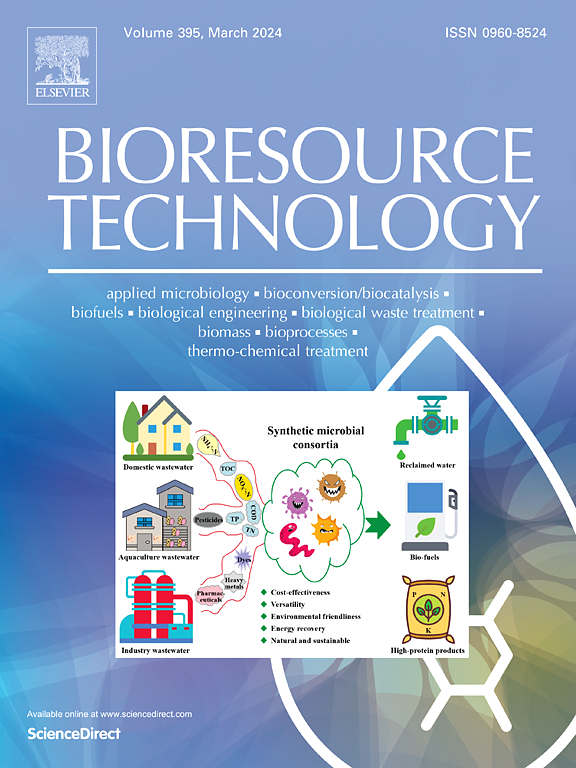Efficient immobilization of cellulase on polydopamine-modified nickel foam for enhanced lignocellulose conversion
IF 9.7
1区 环境科学与生态学
Q1 AGRICULTURAL ENGINEERING
引用次数: 0
Abstract
In situ saccharification of lignocellulose is essential for efficiently converting biomass into value-added products. In this study, nickel foam underwent electrochemical pore size regulation and polydopamine modification to produce polydopamine-modified foam nickel with aperture control (PNiF-AC), which was used for cellulase immobilization and in situ saccharification of wheat straw. PNiF-AC demonstrated excellent hydrophilicity, biocompatibility, and robust adsorption–desorption cycling properties. Immobilizing cellulase onto PNiF-AC significantly improved its thermal stability by 64.8 %. The immobilized cellulase yielded 17.0 mg/mL of reducing sugars during the in situ saccharification of wheat straw, representing a 20 % increase over free cellulase. Moreover, after eight cycles of magnetic stirring, the reducing sugar yield decreased by only 19.4 %, highlighting the remarkable reusability and stability of the immobilized cellulase. These findings establish polydopamine-modified foam nickel as an efficient platform for cellulase immobilization, presenting a novel approach to improving lignocellulose conversion processes.

求助全文
约1分钟内获得全文
求助全文
来源期刊

Bioresource Technology
工程技术-能源与燃料
CiteScore
20.80
自引率
19.30%
发文量
2013
审稿时长
12 days
期刊介绍:
Bioresource Technology publishes original articles, review articles, case studies, and short communications covering the fundamentals, applications, and management of bioresource technology. The journal seeks to advance and disseminate knowledge across various areas related to biomass, biological waste treatment, bioenergy, biotransformations, bioresource systems analysis, and associated conversion or production technologies.
Topics include:
• Biofuels: liquid and gaseous biofuels production, modeling and economics
• Bioprocesses and bioproducts: biocatalysis and fermentations
• Biomass and feedstocks utilization: bioconversion of agro-industrial residues
• Environmental protection: biological waste treatment
• Thermochemical conversion of biomass: combustion, pyrolysis, gasification, catalysis.
 求助内容:
求助内容: 应助结果提醒方式:
应助结果提醒方式:


